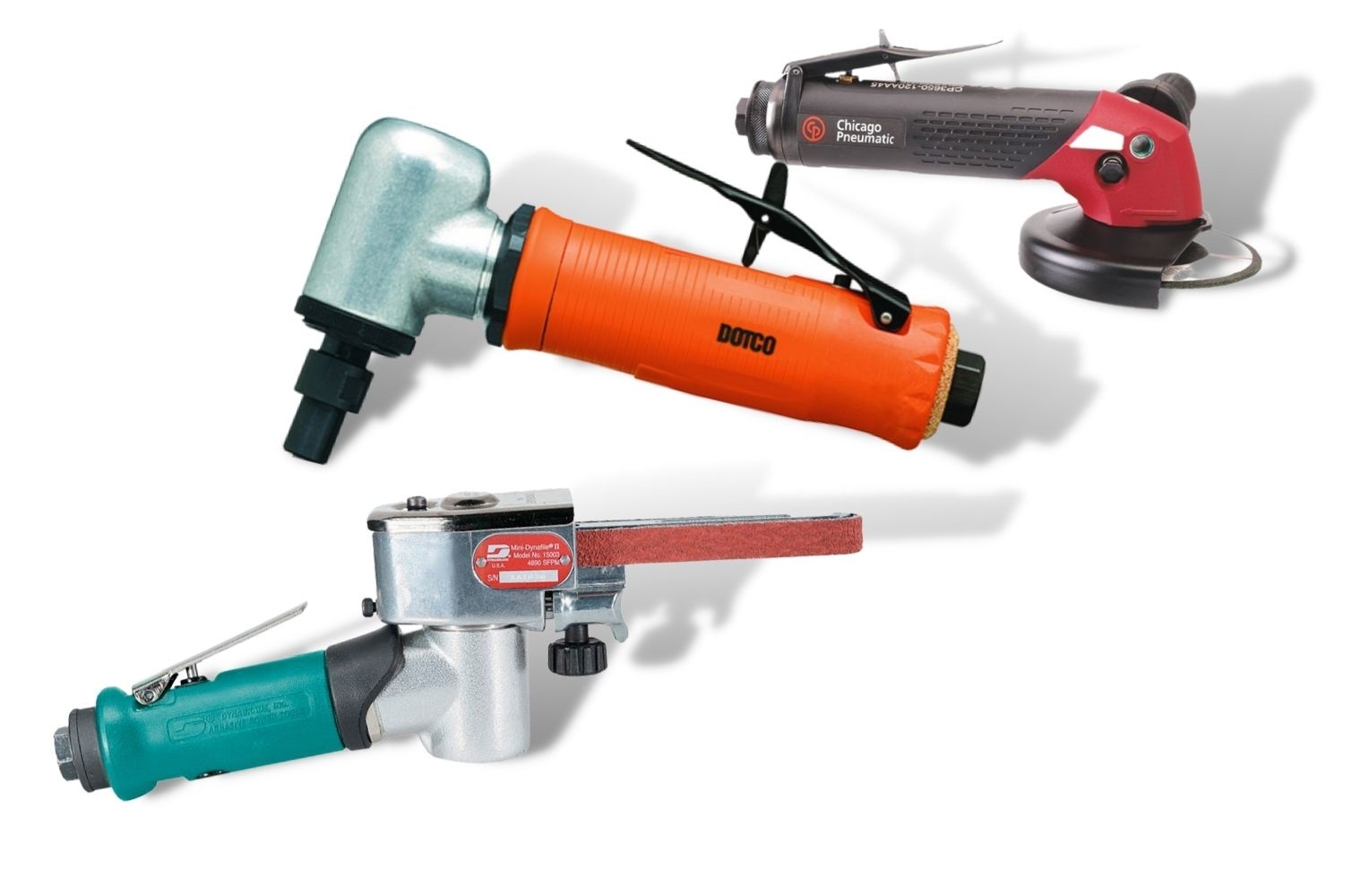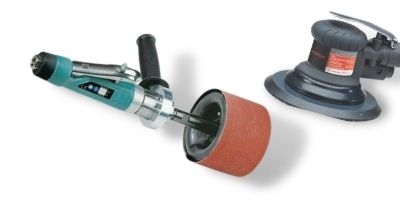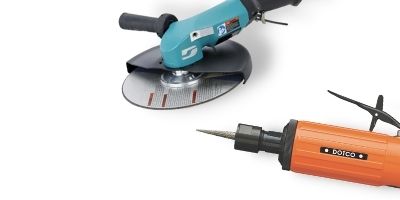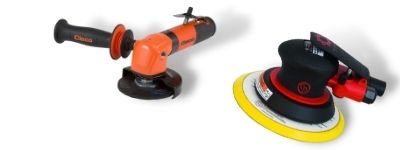Posted by Mark W. Schieber on 12th Aug 2021
Solving Common Challenges Present in Material Removal Applications [Guide]

Historically, carbon steel has been the most popular choice in heavy industries such as transportation, construction, and machinery. This is due to the material’s superior durability, high strength-to-weight ratio, excellent tensile properties, and low price.
However, as the demand for lighter, stronger, and more corrosion-resistant products has emerged, there has been a rise in the use in specialized materials. A few examples of these newer technologies include:
- Aluminum
- Fiber-reinforced polymer composites
- Stainless steel
- Alloy Steel
Alternative materials are taking the place of steel in many traditional applications. Simultaneously, new challenges are arising in material removal processes. Working with alternative materials requires an understanding of their mechanical and thermal properties. Furthermore, many of these compounds behave differently from steel when grinding, sanding, chamfering, or removing welds.
In this article, each of the materials mentioned above, its key considerations, and the recommended tools to transform it will be explored. The end result is that production workers will be able to deliver the best results in the most efficient and safest manner possible.
 Aluminum
Aluminum

Aluminum has been rising in popularity due to its lightweight and corrosion resistant properties.. Recent advancements in alloying technology have increased aluminum’s strength and durability, making it a viable replacement for steel in certain applications.

Key Considerations for Aluminum
With the increasing use of aluminum, it’s important to understand the caveats to be avoided during the material removal process. Aluminum can overheat quickly, causing it to “gum up” which can lead to slow, inefficient material removal, excess abrasive consumption, and damage to the work.
Additionally, due to the material’s properties, grinding aluminum can lead to the production of fine dust. This fine dust is a risk to the operator who may accidentally inhale it. The dust may also pose a potential fire hazard. In fact, OSHA has very specific rules about airborne aluminum chips and grinding dust.
For further reading please visit this link: https://www.osha.gov/laws-regs/standardinterpreta...
When working with aluminum, follow these tips for better results and a safer working environment:
- Use a rear exhaust grinder to help prevent aluminum shavings from becoming airborne
- Use soft-bond or silicon carbide grain abrasives which operate at lower heat levels
- Use stearates, lubricants, and waxes to deter clogging (loading) of coated abrasives and sanding belts
- Keep the work area well ventilated to prevent the inhalation of harmful dust
- Implement a dust extraction hood or table to prevent fire hazards and to protect respiratory health
- Mandate and standardize the use of respiratory protection masks with a P99 particulate filter to further protect operators
 Tools to Use on Aluminum
Tools to Use on Aluminum
Although there are a few sticking points when working with aluminum, this material does not require the use of specialized tools. Instead, tools need to be chosen based on safety, speed, performance, and reliability requirements.
Additionally, as aluminum can overheat, be sure to implement the right abrasive for the job at hand. Only use non-ferrous grinding and cutting discs that are specifically designed for aluminum and aluminum alloys. Most importantly, don’t mix these same discs and wheels with other metals.
|
Key Selection Factors:
The Tools:
|
|
 Fiber-Reinforced Polymer Composites
Fiber-Reinforced Polymer Composites

Another alternative material becoming popular in traditionally heavy industries is fiber-reinforced polymer composites (FRP composites). These consist of a mix of fibers and resins such as epoxy or polyester. FRPs are commonly used in the aerospace, automotive, marine, and construction industries. FRP composites offer a high strength-to-weight ratio and can be up to five times stronger than 1020 grade steel, but at a fraction of the weight. Comparable to aluminum in its strength-to-weight ratio, FRP composites also offer a slight increase in overall strength.
Due to the cost-prohibitive nature of FRP composites, they are only used in select applications.
 Key Considerations for FRP Composites
Key Considerations for FRP Composites
One of the greatest difficulties in FRP applications is the material’s sensitivity to heat. FRP can easily melt during grinding, which can clog up the grinding wheel and damage the component being worked on.
Additionally, dust from the fibers of the composites can be a health hazard for tool operators due to inhalation and fire hazard. Not to mention that FRP particles cause skin irritation and at the bare minimum itchiness. Disposable protective overalls should be worn at all times.
One of the most important considerations when working with FRP composites is that due its splintering properties, this material is not well suited for grinding. For that reason, when it comes to tool selection, the focus should be on lower RPM sanding and finishing tools. Pneumatic Saws also work well with FRP and fiberglass. Furthermore, they offer a long service life because there is no electric motor to burn up.
When working with FRP composites, consider the following:
- Understand the fiber content of the FRP composite. Anything higher than a 70% fiber content will result in a low-quality surface finish.
- Consider lower-speed grinders, routers, and saws. Opt for high horsepower instead.
- Implement proper workspace ventilation.
- Use a dust extraction table and tool shrouds to ensure worker safety.
 Tools to Use for FRP Composites
Tools to Use for FRP Composites
When choosing the right tool to use with FRP composites, the key considerations will be speed and the abrasive utilized. The wrong speed or abrasive will lead to damage and will melt the material onto the abrasive. When using an angle rotary sander with FRP composites, be sure to use a low-speed tool with less than 6,000 rpm. This is critical to ensure that the component is not damaged during sanding.
|
The Tools:
|
|
 Stainless Steel
Stainless Steel

Compared to ordinary steel, stainless steel offers a strength-to-weight ratio advantage, as well as superior corrosion resistance. This material is utilized for containers, pipes, and tanks. 316 Stainless is the most common grade we run across in the field. Common stainless steel processes include: weld seam take down and blend, heavy stock removal, fine sanding and graining.
 Key Considerations for Stainless Steel
Key Considerations for Stainless Steel
Compared to steel, stainless steel has lower heat conductivity, which means the material will be prone to overheating and discoloration during material removal processes. Additionally, stainless steel is prone to damage from abrasives, and any abrasive used on stainless steel cannot be used on other materials due to cross-contamination. Since working with stainless steel requires more care, projects can take longer and require more time to achieve the desired finish.
To avoid setbacks and reduce scrap, adhere to the following:
- Schedule stainless steel projects with extra time to ensure that the work can be performed properly.
- Only use appropriate types of abrasives (Ceramic and Zirconia are great choices for stainless), plus keep all abrasives used for stainless segregated from the general abrasive population.
- Use low-speed tools that operate at 12,000 rpm or below to reduce overheating and damage to the work.
 Tools to Use on Stainless Steel
Tools to Use on Stainless Steel
Due to the risk of overheating, it is best to select lower speed power tools when working with stainless steel. Faster is not always better and 30,0000 RPM grinders are not the answer with Stainless.
|
The Tools:
|
|
 Steel Alloys
Steel Alloys

The steel industry is one of the largest industries in the world. Traditional Steel is made primarily by mixing iron with other metal or non-metal elements. The reason why different elements are mixed in with iron is to obtain different characteristics from the metal.
Alloy steel and carbon steel are two types of steel that differ from each other in composition. The main difference between alloy steel and carbon steel is that alloy steel has higher amounts of other elements aside from iron and carbon whereas carbon steel has only trace amounts of other elements apart from iron and carbon. The term "alloy steel" is the standard term referring to steels with other alloying elements added deliberately in addition to the carbon. Common alloyants include manganese (the most common), nickel, chromium, molybdenum, vanadium, silicon, and boron.
Steel alloy is a tough material and provides durability and resistance to damaging UV rays. Furthermore, there are hundreds of grades of steel alloy available.
 Key Considerations for Steel Alloys
Key Considerations for Steel Alloys
When working with steel alloys, one of the biggest challenges is that material removal applications can be time-consuming. Additionally, the tools that work well on steel alloys are sometimes heavy, (although pneumatic tools almost always offer a better power to weight ratio than electric tools). Holding tools for long periods of time can place physical distress on the operator. Fortunately, a high horse power air tool can increase material removal rates, reduce stock removal time, and thus reduce the amount of time the operator needs to hold the tool.
The following tips will help facilitate material removal in steel alloy grinding applications:
- Invest in high-quality abrasives - Hard-wearing abrasives and self sharpening abrasives will make the project less time-intensive and laborious for the operator.
- Make sure to use the right material removal method for the job. For example, in some cases, using a cut off wheel might be a more efficient option than grinding.
- Use proper technique - the ideal way to grind is to smoothly pull the wheel towards the operator rather than rapidly pushing and pulling the abrasive forwards and backwards over the work. The latter will result in premature abrasive failure.
- Utilize industrial grade pneumatic tools whose RPM’s are matched to their abrasives.
 Tools to Use for Steel Alloys
Tools to Use for Steel Alloys
When working with steel alloys, the considerations for air tool selection should be horsepower, RPM, ergonomics, and safety. Choose tools that offer the highest amount of power at the least amount of tool weight (The CP3650 is an excellent example of an excellent power to weight grinder). High output tools can reduce cycle time and lessen operator fatigue.
Additionally, keep in mind that bonded and coated abrasives are not always the only choice. Double Cut and Omni Cut Carbide burrs are also a good option for grinding alloy steels.
|
The Tools:
|
|

Conclusion:
As raw materials continue to evolve, the tools and processes that transform them will need to keep pace. Fortunately, with ongoing investments in research and development, air tool and abrasive manufacturers continue to introduce products designed to make the modern fabricator more productive than ever.
For assistance choosing the correct tools and abrasives for your material removal application, we are at your service. Give us a call or make an appointment to speak to an expert by filling out the form on our Schedule a Consultation Page


![Solving Common Challenges Present in Material Removal Applications [Guide] Solving Common Challenges Present in Material Removal Applications [Guide]](https://cdn11.bigcommerce.com/s-13fb4/images/stencil/485x480/uploaded_images/material-removal-3-.jpg?t=1628802617)



